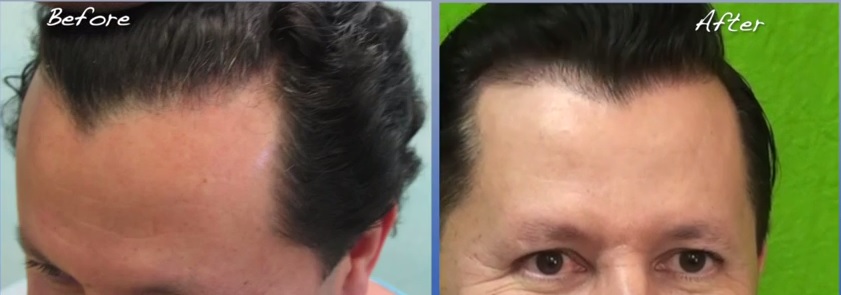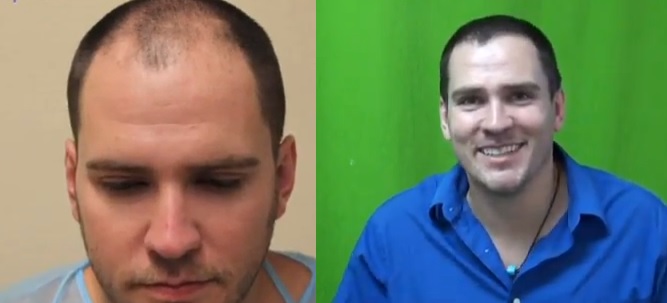You may want to attain a clearer understanding of what specific hair restoration associations do and offer. But according to Dr. U, they should not be confused with legitimate credentials.
Board Certification
Board certification distinguishes highly competent specialists from general medical practitioners. It is a rigorous, voluntary process which includes:
(1) written examination
(2) peer evaluation
Peer evaluation is an important step. Passing a written test only demonstrates mastery of concepts and book knowledge. But this does not guarantee that a specialist will be able to provide the absolute best results or care. Therefore performance is what will matter from the perspective of real patients.
According to a Real Self survey, patient satisfaction tends to be higher when cosmetic procedures are performed by board certified specialists. The official organization who issues this credential is the American Board of Medical Specialities (ABMS)
So far, they have approved 24 medical specialty boards. At the moment, this does not include hair transplant surgery. However, practitioners of this field should ideally possess board certification in dermatology and or plastic surgery for background insights on hair treatment in general. Dr. U, for example is certified by the American Board of Dermatology which is a subdivision of the ABMS.
Potential hair transplant patients may stumble upon misleading claims about the qualifications they find for physicians they are inquiring about. For example, a doctor might say that they are certified by the American Board of Hair Restoration or that they are board certified in surgical hair restoration. However, neither of these are a division of the American Board of Medical Specialties.
Prospective patients need to therefore be aware of these types of fine lines, especially since so many organizational names sound very similar. But it will be important to pay attention to subtle discrepancies and question face value information.
Hair loss sufferers from other countries who are considering restoration surgery in the United States will most certainly need to understand what qualifications to look for and to be wary of the fact that the names of many associations sound almost the same.
Examples of Hair Restoration Associations
So now you’ve learned that hair transplant surgeons should have board certification in plastic surgery or dermatology. These qualifications must be issued by one or both of these specific divisions within the American Board of Medical Specialties:
(1) American Board of Dermatology
(2) American Board of Plastic Surgery
Again it is common to find different organizations including hair restoration associations and societies with extremely similar sounding names (e.g. American Association of Plastic Surgeons). Therefore, it is essential to be keenly aware of this and avoid confusing one for another.
Other affiliations and names of organizations that you may come across include:
(1) American Hair Loss Council
(2) American Society of Hair Restoration Surgeons
American Hair Loss Council
The American Hair Loss Council is a non-profit organization founded by business owners in the general field of hair replacement. Membership is offered to medical and non-medical professionals alike. So, this not only includes hair transplant surgeons, but also trichologists, wig fitters, extensions and technicians.
The organization aims to provide education and even accreditation to its members. Again, this accreditation should not be confused with ABMS board certification.
Web MD warns readers that much of the information they provide is “outdated” and even “dangerous.”
American Society of Hair Restoration Surgeons (ASHRS)
Because of the fact that there is no board certification offered in hair restoration, the ASHRS decided to make this available.
But to emphasize and reiterate again, only the American Board of Medical Specialties can issue official board certification. And this is what patients need to look for.
The American Society of Hair Restoration Surgeons (a hair restoration association of surgeons ) does administer a written exam to interested members. But there is no program for peer to peer evaluation which helps to establish competency in actual performance and patient care.
International Society for Hair Restoration Surgery
Members of the ISHRS include hair restoration surgeons from all over the world who wish to advance their knowledge within the field through continuing education. The organization does not offer any type of certification for proficiency.
Dr. U regularly attends conferences help by the ISHRS. At the 2012 gathering, he even presented his Advanced Follicular Unit Extraction system, uGraft to attendees.
What Patients Should Look For
Anyone who is considering undergoing hair restoration surgery needs to find a physician with demonstrated competency. It will be extremely important to avoid getting caught up in conceptual ideas and what may seem plausible in theory. But rather, what will matter is the ability to generate the best results possible. Otherwise, mistakes can necessitate the need for additional and expensive hair repair surgeries.
In the United States, it is legal for a doctor with just a medical degree to offer hair transplantation, according to Dr. U. But this does not mean that they are sufficiently qualified to do so. Board certification by the American Board of Medical Specialties offers a measure of reliability in terms of the physician’s proficiency.
Beyond this, however, evidence of consistent and demonstrated experience is what will ultimately matter for desired long term results. This would include an extensive roster of successful patient cases documented as:
(1) before and after photos demonstrating the following:
- close ups
- overall effect
- various angles
(2) patient videos including
- before and after images
- general objectives
- treatment details
- patient’s feedback
Viewing as many cases as possible will help determine trends in the doctor’s overall performance. In general, look for:
- consistent and reliable growth yield
- natural looking patterns and aesthetics
- quality and attractiveness of hairline and temples
Also visiting forums and searching for written testimonials from past patients will also help form a good idea of the quality of the doctor’s work.

Related articles:
ISHRS Issues Warning On Unlicensed Hair Transplant Technicians

